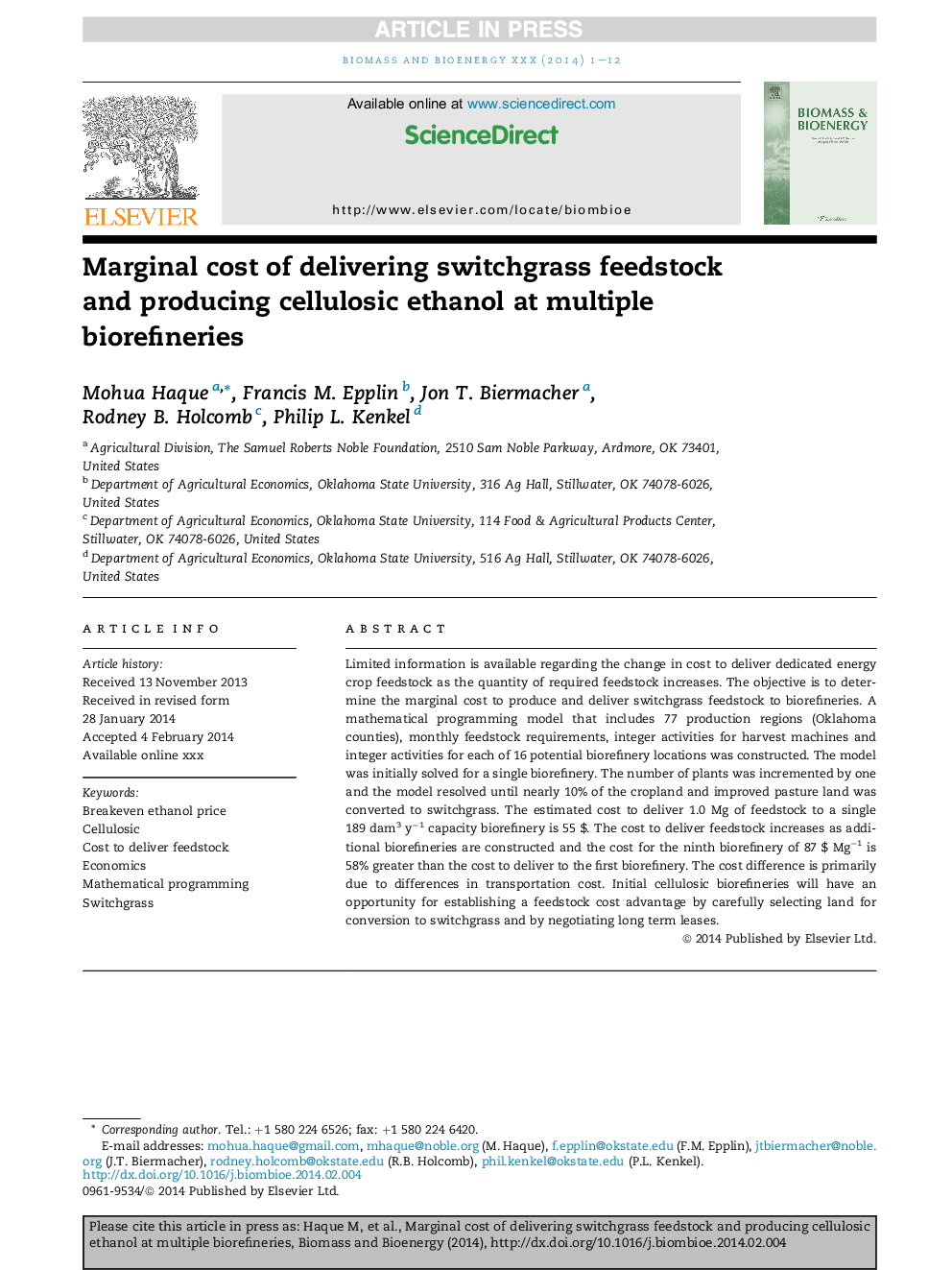| Article ID | Journal | Published Year | Pages | File Type |
|---|---|---|---|---|
| 7064761 | Biomass and Bioenergy | 2014 | 12 Pages |
Abstract
Limited information is available regarding the change in cost to deliver dedicated energy crop feedstock as the quantity of required feedstock increases. The objective is to determine the marginal cost to produce and deliver switchgrass feedstock to biorefineries. A mathematical programming model that includes 77 production regions (Oklahoma counties), monthly feedstock requirements, integer activities for harvest machines and integer activities for each of 16 potential biorefinery locations was constructed. The model was initially solved for a single biorefinery. The number of plants was incremented by one and the model resolved until nearly 10% of the cropland and improved pasture land was converted to switchgrass. The estimated cost to deliver 1.0Â Mg of feedstock to a single 189Â dam3Â yâ1 capacity biorefinery is 55Â $. The cost to deliver feedstock increases as additional biorefineries are constructed and the cost for the ninth biorefinery of 87Â $Â Mgâ1 is 58% greater than the cost to deliver to the first biorefinery. The cost difference is primarily due to differences in transportation cost. Initial cellulosic biorefineries will have an opportunity for establishing a feedstock cost advantage by carefully selecting land for conversion to switchgrass and by negotiating long term leases.
Related Topics
Physical Sciences and Engineering
Chemical Engineering
Process Chemistry and Technology
Authors
Mohua Haque, Francis M. Epplin, Jon T. Biermacher, Rodney B. Holcomb, Philip L. Kenkel,
